Camera traps have been a key part of the conservation toolkit for decades. Remotely triggered video or still cameras allow researchers and managers to monitor cryptic species, survey populations, and support enforcement responses by documenting illegal activities. Increasingly, machine learning is being implemented to automate the processing of data generated by camera traps.
A recent study published showed that, despite being well-established and widely used tools in conservation, progress in the development of camera traps has plateaued since the emergence of the modern model in the mid-2000s, leaving users struggling with many of the same issues they faced a decade ago. That manufacturer ratings have not improved over time, despite technological advancements, demonstrates the need for a new generation of innovative conservation camera traps. Join this group and explore existing efforts, established needs, and what next-generation camera traps might look like - including the integration of AI for data processing through initiatives like Wildlife Insights and Wild Me.
Group Highlights:
Our past Tech Tutors seasons featured multiple episodes for experienced and new camera trappers. How Do I Repair My Camera Traps? featured WILDLABS members Laure Joanny, Alistair Stewart, and Rob Appleby and featured many troubleshooting and DIY resources for common issues.
For camera trap users looking to incorporate machine learning into the data analysis process, Sara Beery's How do I get started using machine learning for my camera traps? is an incredible resource discussing the user-friendly tool MegaDetector.
And for those who are new to camera trapping, Marcella Kelly's How do I choose the right camera trap(s) based on interests, goals, and species? will help you make important decisions based on factors like species, environment, power, durability, and more.
Finally, for an in-depth conversation on camera trap hardware and software, check out the Camera Traps Virtual Meetup featuring Sara Beery, Roland Kays, and Sam Seccombe.
And while you're here, be sure to stop by the camera trap community's collaborative troubleshooting data bank, where we're compiling common problems with the goal of creating a consistent place to exchange tips and tricks!
Header photo: Stephanie O'Donnell
No showcases have been added to this group yet.
Wildlife Conservation Society (WCS)
I am a biologist interested in land use change impacts on biodiversity and sustainable value chains. I work with productive sectors, incorporating biodiversity conservation as a criteria for planning and managing productive systems.
- 0 Resources
- 0 Discussions
- 4 Groups
British-Costa Rican | Interested in transdisciplinary research in Planetary Health amongst other things

- 0 Resources
- 1 Discussions
- 13 Groups
- @Rawail
- | Rawail
NbS Expert/ Environmentalist
- 0 Resources
- 0 Discussions
- 5 Groups
- @NinaTuttie
- | She
An avid learner interested in wildlife ecology, conservation technology and community development
- 0 Resources
- 0 Discussions
- 8 Groups
- @Tina
- | Her
I am a young researcher and scientist with extensive experience in the ecology of small mammals. I am open to career and capacity-building programs.



- 0 Resources
- 16 Discussions
- 6 Groups
- @shawnj
- | he/him
- 0 Resources
- 1 Discussions
- 1 Groups
Co-founder @ Behold
- 0 Resources
- 4 Discussions
- 6 Groups
- 0 Resources
- 0 Discussions
- 1 Groups
World Wide Fund for Nature/ World Wildlife Fund (WWF)

- 0 Resources
- 12 Discussions
- 15 Groups
Wildlife monitoring harmonizable at International level, Enetwild, European observatory of wildlife EOW, faunet, camera traps

- 0 Resources
- 2 Discussions
- 1 Groups
- @apcxs
- | He, his, them
- 0 Resources
- 0 Discussions
- 11 Groups
I am a software developer and marine conservationist, passionate about biodiversity conservation and sustainable living.
- 0 Resources
- 0 Discussions
- 1 Groups
This study breaks ground in outlining a methodology for a system of low-cost, long-term camera traps (Dispersed Environment Acquatic Cameras) that can be deployed over large spatial scales in remote marine environments...
30 November 2021
In Ellie Warren's interview with Sara Beery as part of the Technical Difficulties Editorial Series, they discussed how the hype surrounding machine learning impacts our perceptions of failure, and how conservationists...
23 November 2021
CAIMAN is a product from the Sensing Clues Foundation that automatically classifies animals on images from camera traps. It aims to be available by the end of 2021, contact the Sensing Clues team for more details. This...
18 November 2021
In her case study from our Technical Difficulties Editorial Series, Juliana Masseloux discusses her challenges in working with camera traps to study elusive and rare animals like the pangolin, and shares her best advice...
11 November 2021
Black Rock Forest (BRF) are recruiting a seasonal Wildlife Connectivity Technician. Visit their website for further details and how to apply. Hurry, applications close soon!
3 November 2021
In their three-part interview from our new series Technical Difficulties, Colby Loucks and Eric Becker share the failures they've encountered and learned from throughout six years of working on the WWF-US Wildlife Crime...
13 October 2021
In Alina Peter's and Kristen Snyder's contribution to the Technical Difficulties Editorial Series, you'll receive a practical checklist of factors and questions to consider at various stages of your conservation...
13 October 2021
Article
Wildlife Insights is excited to announce the public release of their new platform! Read on to learn about all the useful features you'll find on Wildlife Insights, and check out WILDLABS' Tech Tutors episode with...
27 July 2021
Read our interview with Tasmin Alexander, early career conservationist and member of the CLP Future Conservationist Award-winning Preuss's Monkey Project research team. Working in the Obudu Plateau in Nigeria, this team...
2 June 2021
Read our interview with early career conservationist and CLP Future Conservationist Award recipient Owino Raymond, who is working with camera traps along the Kenya-Somalia border to understand and reduce conflict...
21 May 2021
Check out the new research article "Environmental DNA metabarcoding as a useful tool for evaluating terrestrial mammal diversity in tropical forests." Recently published in Ecological Society of America's Ecological...
6 April 2021
Community Announcement
Whether you spent the last year working in the field, lab, at home, or virtually, the WILDLABS community's conservation tech achievements were on full display in our annual #Tech4Wildlife Photo Challenge! Relive our...
25 March 2021
August 2025
event
event
September 2025
event
event
event
May 2023
event
April 2023
58 Products
Recently updated products
4 Products
Recently updated products
| Description | Activity | Replies | Groups | Updated |
|---|---|---|---|---|
| Just in case anyone out there who's wondering the same as I did. I finally have this specific model in hand, and no it doesn't record in hybrid mode. |
|
Camera Traps | 4 years 10 months ago | |
| Thanks Carly! I was thinking similar things, you can identify shape a lot better when you see an object with depth rather than without. The two cameras can be configured... |
|
Camera Traps | 4 years 11 months ago | |
| Fig 2 here; https://onlinelibrary.wiley.com/doi/full/10.1111/aje.12573 might help for the Bushnell. I haven't tested Stealthcams. There is more here; https... |
|
Camera Traps | 5 years ago | |
| Great talk! I thoroughly enjoyed it. Some high schoolers have done small AI projects(s) and have interest in the wildlife. What resources would you all suggest to further... |
|
AI for Conservation, Camera Traps | 5 years 1 month ago | |
| Hi all, There is a conversation underway in the "Ethics of conservation tech" group on best practices for responsible ue of... |
|
Camera Traps | 5 years 2 months ago | |
| Hi everyone, I am resurrecting this thread as WILDLABS is currently planning an online tutorial on camera trap repairs in the field on 23rd July at 11 AM ET on which I... |
+23
|
Camera Traps | 5 years 2 months ago | |
| Is this offer still open |
|
Camera Traps, Marine Conservation | 5 years 2 months ago | |
| Hi Naomi, I'm not aware of any guidelines published, but we've got the smooth coated otter in our camera traps before, and I suggest you follow a stratified sampling... |
|
Camera Traps | 5 years 3 months ago | |
| Hi Tim, Your diagramme shows a USB connection between the camera and the RPi. What kind of camera is it? Also, does this mean the RPi lives with the camera in the... |
|
Camera Traps | 5 years 4 months ago | |
| Hi everyone! We are happy to announce our third annual iWildCam camera trap challenge, focused on helping to automate species... |
|
Camera Traps | 5 years 5 months ago | |
| I'm working on developing an average speed camera system using a Raspberry Pi and an Arduino that will be used in Zimbabwe on a road... |
|
Camera Traps | 5 years 5 months ago | |
| Hi Gregory, That is quite shocking to hear that a road could be so detrimental to wildlife. If you were able to place a speed hump or rumble strip where you place the camera... |
|
Camera Traps | 5 years 7 months ago |
Resource: Wildlife Speed Cameras: Measuring animal travel speed and day range using camera traps
28 April 2016 2:39pm
7 August 2016 11:15pm
Hi Steph - just to follow up on your post: @MarcusRowcliffe , James Durrant and I have been working on a bit of software to implement the "computer vision" techniques that are mentioned in that paragraph. You can see a demonstration of it in action here. It requires camera-trappers to "calibrate" their camera traps during setup (or take-down), by taking pictures of a standard object (for example, we use a 1m pole held vertically) at different distances. The calibration takes ~10 mins per location. From this, you can reconstruct the paths that animals take infront of cameras, the total distance they travelled, and therefore their speed.
[ARCHIVED EVENT]: Approaches to Analysing Camera Trap Data
18 April 2016 3:45pm
5 August 2016 9:54pm
Hi Steph,
Only just discovered this site, so I'm a bit late to the game.
I'd love to hear what your main take-aways were from this meeting!
Best,
Louise
5 August 2016 10:35pm
Hi Louise,
Welcome! Unfortunately, an uncomfortably busy calendar meant I ended up missing this gathering. However, I'm sure that @SteffenOppel @Tomswinfield or @ali+johnston (I think you were all involved?) might be kind enough to jump in here and share some of their key take aways from this discussion?
Steph
How can technology help us monitor those small cold-blooded critters that live in caves?
25 July 2016 12:00am
Discussion: 360° Camera for Arboreal Camera Trapping
19 July 2016 2:38pm
Camera traps reveal mysteries of nature
18 July 2016 12:00am
Discussion: Self-powered camera trap
24 November 2015 7:36pm
1 December 2015 6:27pm
I was initially thinking of dozens or maybe even hundreds of nodes coming back to a central wired connection point. I wonder if something like Google's project Loon could work in place of an on-the-ground network.
But stepping back from the tech for a moment, really the problem we're trying to solve here is being able to have remote monitoring cameras that don't need anyone to go out to change batteries or memory cards. After salaries, vehicles/transportation is the top expense at pretty much all of the conservation partners we have. Anything we can do to reduce the travel (and the time of the people as well) is huge.
1 December 2015 6:37pm
So, in terms of power, does the "classic" solution with a set of solar panel cells on top of the box have some major flaws? I'm pretty sure I've seen self-powered meteo stations looking like this positioned along motorways/higways (don't remember what country or even a continent was it :-) Not being an expert in photo-voltaics, I would risk saying that a purposely-designed cell pointing up, directly at the sun, will have better efficiency than a re-purposed CMOS censor :-)
And indeed, talking to something overhead (either the baloons or Facebook's drones - forgot the name - or maybe even satellites?) would be probably much simpler than ground-based communication. If we had big enough energy budget, the communication channel would be "relatively easy" to implement...
4 July 2016 11:51am
Some camera trap manufacturers offer solar power as an add-on or option off the shelf. I agree that using the image seems like a solution looking for a problem.
The Highs and Lows of Camera Traps for Rapid Inventories in the Rainforest Canopy
4 July 2016 12:00am
Wildlife Crime Tech Challenge Accelerator Bootcamp
24 June 2016 12:00am
Project Feedback Wanted: Building Low Cost Cameras
2 March 2016 9:59am
11 May 2016 6:27pm
thanks for this very interesting post! i was also trying to develop an inexpensive camera trap but with not good results. i think the use of a PIR sensor can give more battery life than motion detection via software. Can you give more details about the components you used please?
Thanks
Paolo
20 May 2016 11:07pm
Hi Sorry been away, I'll list more about parts etc.. In the mean time the Pi Zero has just had an upgrade..
http://petapixel.com/2016/05/19/5-raspberry-pi-zero-now-camera-compatible/

TEAM Network and Wildlife Insights
28 April 2016 12:00am
Is Google’s Cloud Vision useful for identifying animals from camera-trap photos?
20 April 2016 12:00am
Disruptive Technology: Embracing the Transformative Impacts of Software on Society
10 March 2016 12:00am
[ARCHIVED]: Smithsonian Course: Camera Trapping Study Design and Data Analysis for Occupancy and Density Estimation
3 February 2016 2:25pm
Wildlife Crime Tech Challenge: Winners Announced!
22 January 2016 12:00am
The Social Lives of Conservation Technologies and Why They Matter
2 November 2015 12:00am











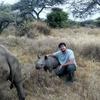

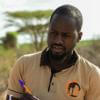















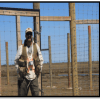








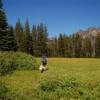

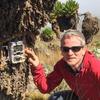



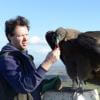


13 June 2016 4:59pm
Here's a set of tools that could be applicable to this idea
https://github.com/pfr/VideoSpeedTracker